Well folks, we’re now nearing the end of what has been a very exciting and eventful year for all of us here at testRTC. If you’ve been part of the journey then you may know how much has changed over the last several months but one thing that will always remain constant is our dedication to provide the #1 resource for our customers when it comes to testing and analyzing your WebRTC environments.
Administration
In this release, we’ve spent some time on the general administration capabilities, where we were lacking a bit. Here are some things you can expect to find in this release:
- Recommendations Engine: Moving from basic analysis and visualization of metrics and events collected to root cause analysis and recommendations of what to do.
Now when a session ends, we’ll actively check the metrics and events for telltale signs of wrong behavior. We’re starting with common issues our clients are facing and we then plan on growing this into a chunky library of rules and recommendations. If for example, you will be forgetting to close a peer connection – we’ll note that as an error. If a user switches his audio or video devices too many times – we’ll warn you about it. If there’s a “glitch” in incoming audio packets for a period of time – you won’t need to look at the graphs at all – we’ll let you know about it. - Revamped API management: You now have the option to have more than a single API key per type and also to manage them better. This can prove to be very useful, especially if you need to change your watchRTC SDK key – you can now do the migration over time, by having two API keys and migrating from one to the other over time, deleting the old one once you’re done with your own deployment.
For more information, see API Key Management.
- Export mechanism: We had an export capability available on some of the tables in testRTC. It worked nicely, but it was lacking. Certain issues forced us to disable the feature and workout a different approach, which we’re introducing in this release. The new export function is now limited to a maximum of 1,000 rows and will start running the export the moment you ask for it. If the task is short, you’ll get the exported file to download automatically. If it takes slightly longer, it will send you an email once done with a download link.
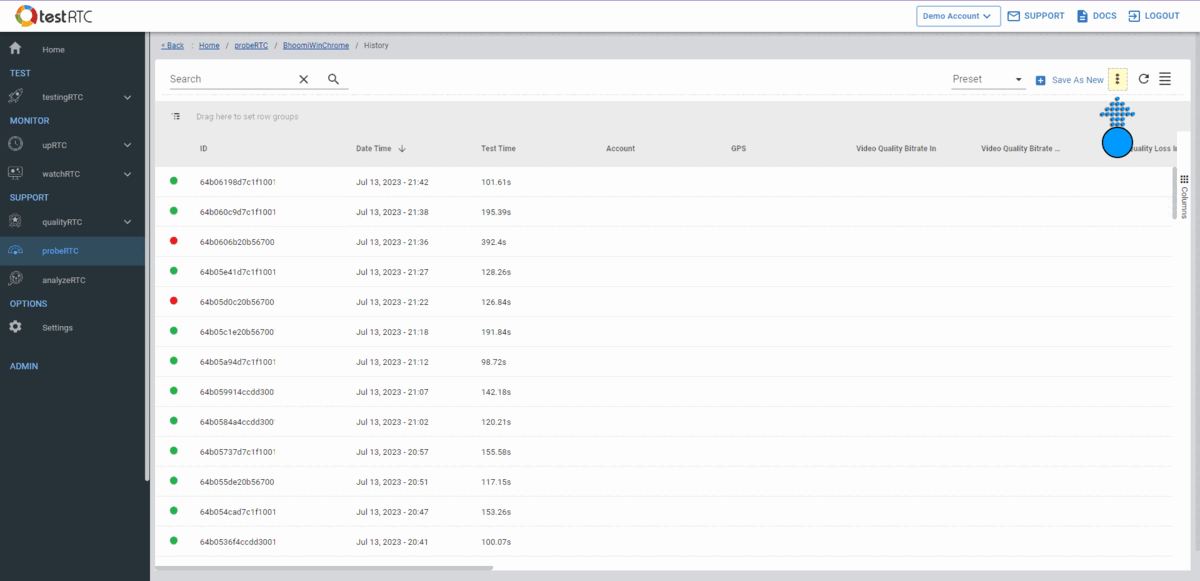
Note: Export is available in most places across the platform. If you need to export something longer than the maximum limit we have, our suggestion is to use our Data Streams feature instead – this is what it was designed and built for.
Analysis
- A brand new recommendations engine: We’re shifting gears here at testRTC, moving from basic analysis and visualization of metrics and events collected to root cause analysis and recommendations of what to do. We started this in qualityRTC in the logs, (soon to be shared more visibly via the UI) and now we’re introducing this in analyzeRTC, testingRTC and watchRTC 💪.
What does this mean exactly?
When a session ends, we now actively check the metrics and events for telltale signs of wrong behavior. We’re starting with common issues our clients are facing and we plan on growing this into a chunky library of rules and recommendations.
If for example, you will be forgetting to close a peer connection – we’ll note that as an error. If a user switches his audio or video devices too many times – we’ll warn you about it. If there’s a “glitch” in incoming audio packets for a period of time – you won’t need to look at the graphs at all – we’ll let you know about it.
This goodness is being added to the existing notifications section of the results across our services.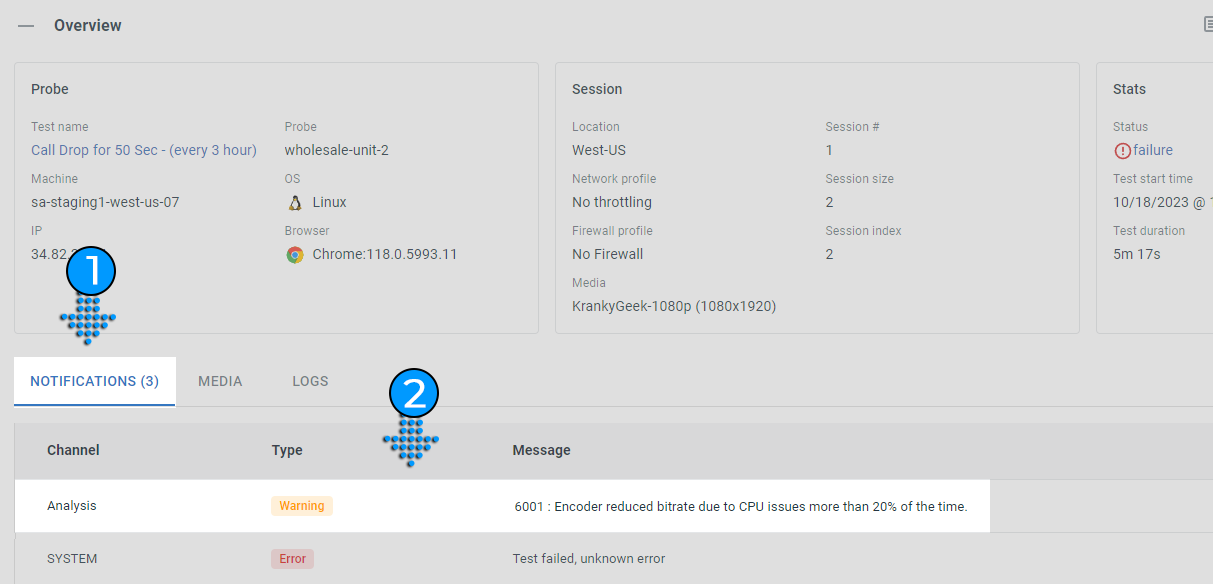
What’s great about this is that it incorporates a lot of robust concepts allowing us to extend this rapidly and for you to make the best use of it. One example of this – each recommendation has its own unique status code that can be accessed programmatically via our APIs, webhooks and data streams. Each such status code also comes with its own detailed article in the knowledge base.
Note: This is a premium feature that will only be available on some plans.
Learn more about our recommendations and status codes. - Redesigned overview section: We’ve redesigned the top ribbon and overview section of our analysis pages.
- Overview now shows any errors or warnings upfront if they are present.
- Tiles are now larger with less space between them.
- Our handy new note feature has been added also to watchRTC, and while at it, made it smoother to use.
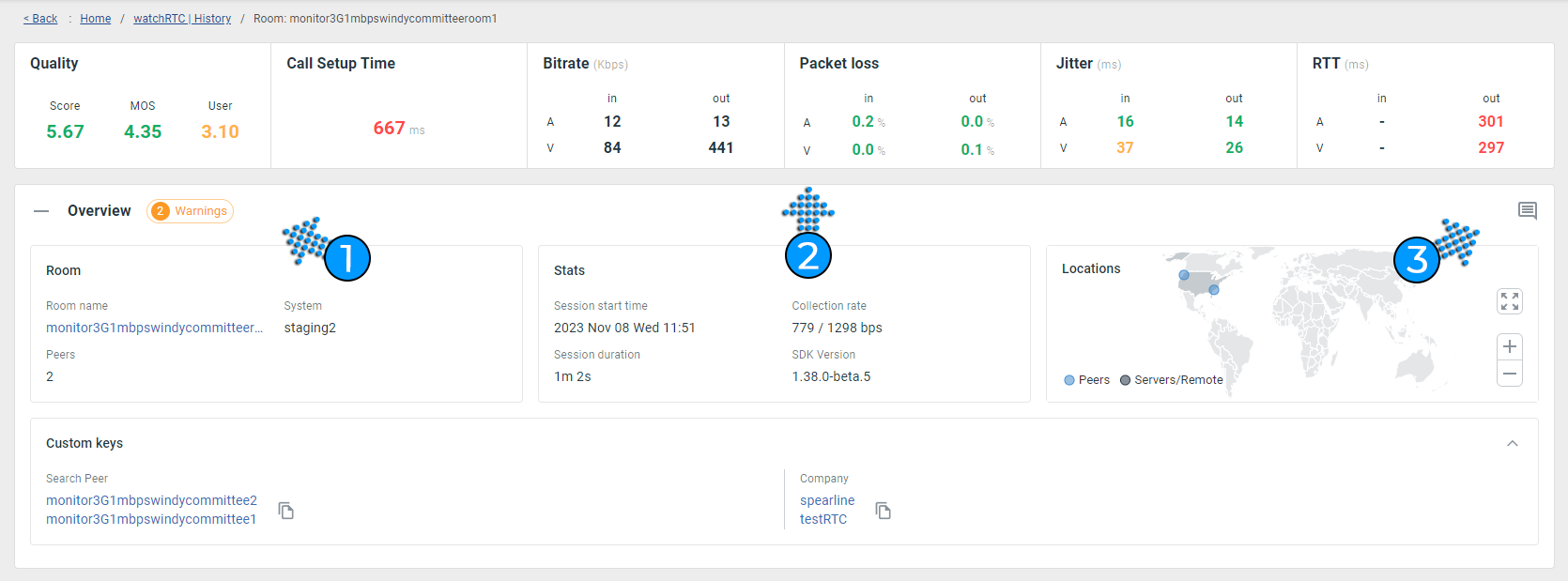
- Advanced WebRTC Analytics: We’ve added support for freezeCount, totalFreezesDuration, pauseCount & totalPausesDuration to the advanced charts.
qualityRTC
- traceroute test in Electron: If you are packaging your service in an Electron application, then you now have access to an additional powerful test in qualityRTC – the ability to conduct a traceroute for a given URL. This is a new silent test that can be enabled on your account. Using it requires also including our qualityRTC Electron package in your Electron application. The end result? Traceroute information will be added to the log when network tests are conducted with qualityRTC.
Learn more about qualityRTC traceroute silent test. - Chrome extension: In our last release, we’ve introduced a Chrome extension called testRTC Companion. The extension can be found on the Chrome Web Store.
When a user installs the extension and then runs a network test on qualityRTC, it will now collect also machine data such as memory use and CPU use: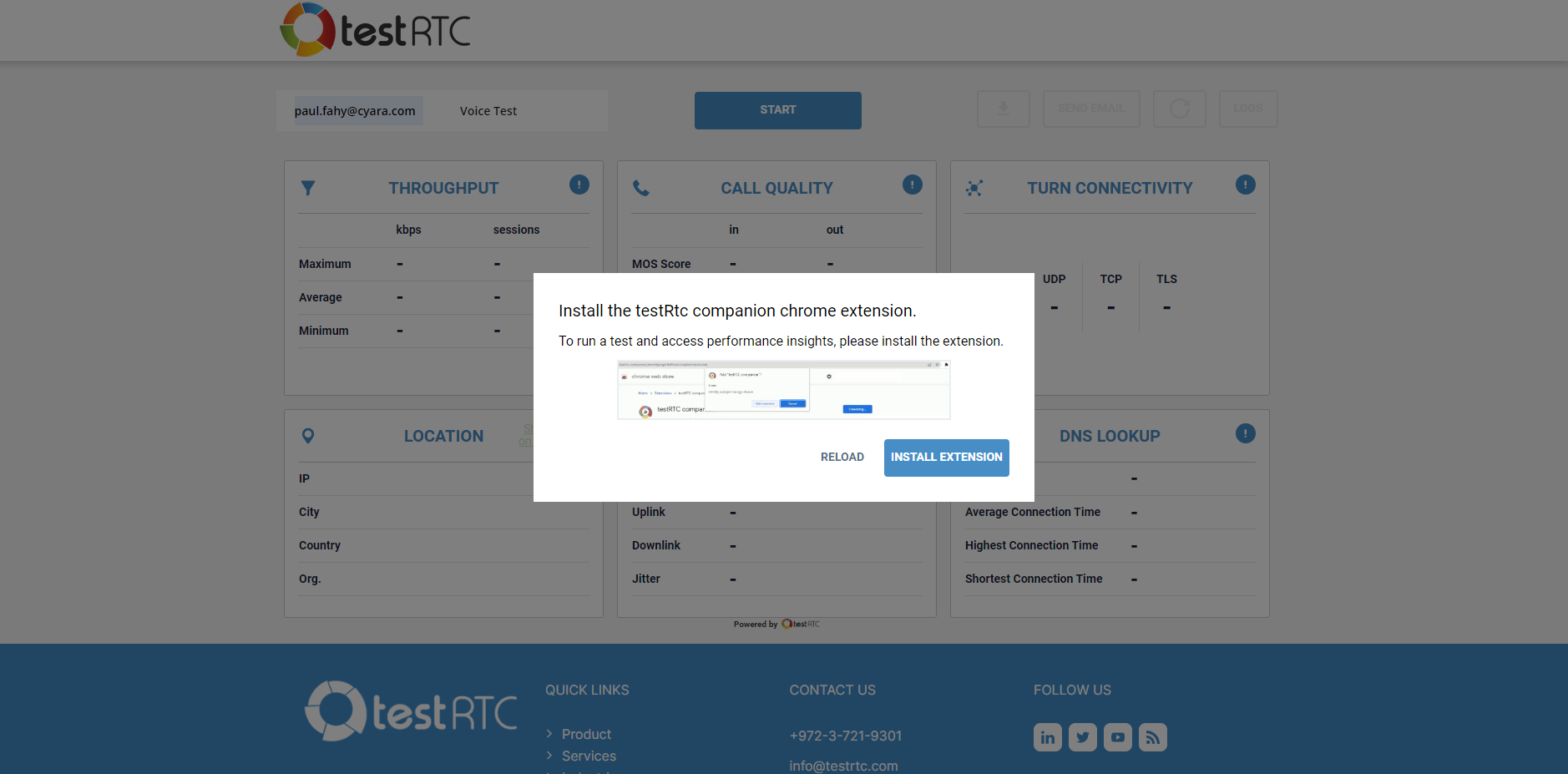
To make the whole process simple, you can also force a user to install the extension by adding /?companion=force to the test URL.
Read more about the testRTC Companion App in the article Chrome Extensions in qualityRTC. - Here and there:
- We are slowly introducing recommendations into qualityRTC. These provide root cause analysis and suggestions to the user of how to improve his network quality. In this round, we have beefed up recommendations related to those who need video calling. You can find the recommendations at the end of the log.
- You can now decide for each network test if any PII (Personal Identifiable Information) should be obfuscated or removed immediately. This is useful if you are handling different types of customers with different privacy expectations.
- For our customers who use Twilio, we now support API key authentication mechanisms as well as our old Auth Token mechanism. This should make it easier for customers to regenerate Auth Tokens in their account without fear of breaking their qualityRTC implementation.
probeRTC
- History table now shows the type of run in a new column, indicating if the run is normal or thorough
- We added a 6 hours interval to the scheduling options of thorough runs
watchRTC
- Embed rooms and peers in your web pages: You can now take the room and peer pages from the watchRTC History and embed them as an iframe component in your own web pages. This is useful when you want to share such information with your OEM or large enterprise customers – or if you are looking into fusing this information directly into your own internal existing dashboards. Learn more about how to embed watchRTC information in web pages.
- Session type chart in Trends: There is a new Session type chart in the Trends dashboard. This one will indicate the percentage of connections that end up using TURN, STUN and the localhost.

- SDK improvements:
- The statListener function now also returns the codec type per channel
- addEvent() can now be called with an explicit peer connection object.
See Adding custom events in watchRTC for more information.
- Here and there:
- Found something interesting in the results of a room or a probe? You can now leave a note about it with a new Add Note feature.
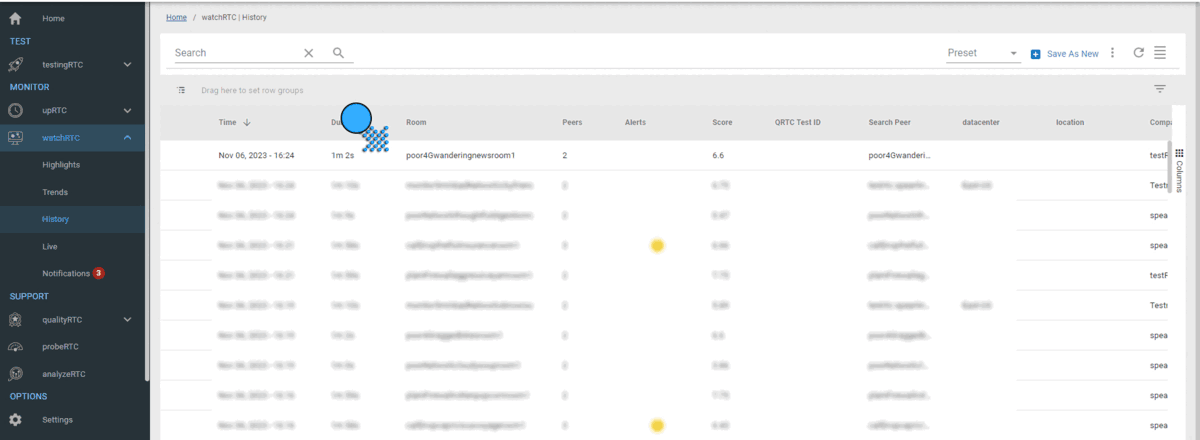
- Webhooks in watchRTC have changed their format a bit – they now also include custom keys. If you are using webhooks already, be sure to modify them accordingly.
- We introduced the ability to add notes on room and peer results of watchRTC. This is in line with the same capability we already had in testingRTC.
- You can now import and export watchRTC alerts. This is useful if you have multiple watchRTC projects and need them to have the same configuration.
- Found something interesting in the results of a room or a probe? You can now leave a note about it with a new Add Note feature.
